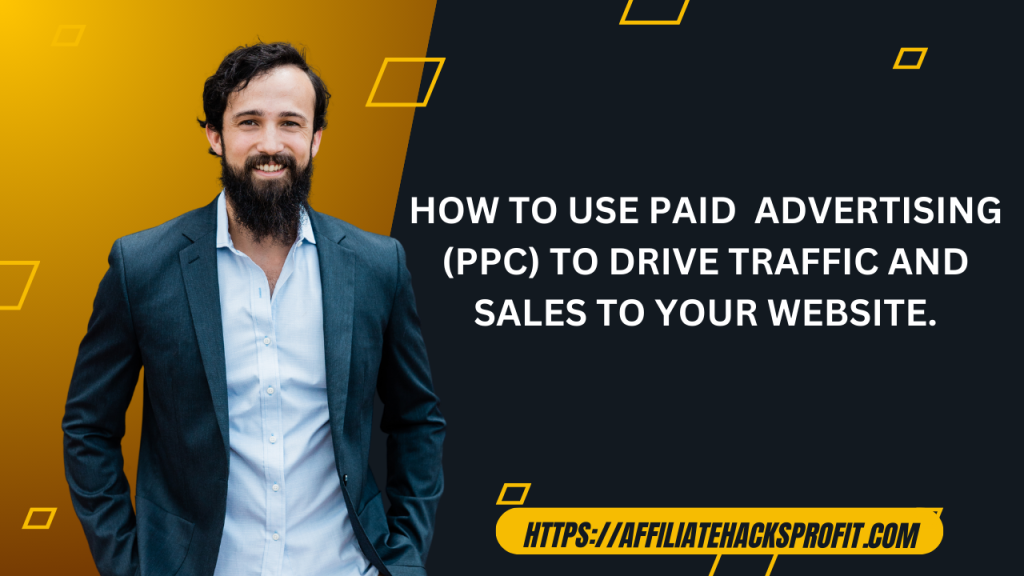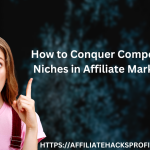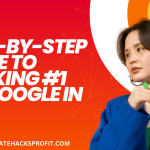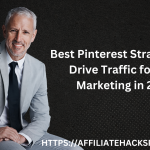Welcome to my article “How to Use Paid Advertising (PPC) to Drive Traffic and Sales to Your Website”. In the ever-evolving world of digital marketing, driving traffic to your website is a bit like trying to catch fish in a vast ocean. Sure, there are plenty of fish out there, but how do you ensure they find your bait and swim right into your net? Enter Paid Advertising, or as the cool kids call it, PPC (Pay-Per-Click). Think of PPC as your secret weapon—a highly effective way to lure in those elusive clicks and reel in potential customers. It’s fast, targeted, and if done right, can make your website the hottest spot in the digital ocean.
But, like any good fishing expedition, PPC requires strategy, patience, and a little bit of know-how. Without the right approach, you might find yourself spending more on bait than the catch is worth. That’s where this guide comes in. We’re diving deep into the world of PPC, showing you how to set up campaigns that not only drive traffic but also convert clicks into cold, hard sales. So grab your gear, because it’s time to cast your net wide and watch the traffic (and sales) roll in!
Discover the Ultimate Method for Earning $100-$300 Daily – Dive into This FREE Video to Get Started >>>

Understanding the Basics of PPC Advertising
If you’ve ever clicked on an ad while searching for the best pizza place in town, congratulations—you’ve been part of a Pay-Per-Click (PPC) advertising campaign! PPC is like the VIP pass to digital marketing, allowing you to target potential customers with pinpoint precision. But before you dive in and start throwing money at ads, let’s break down the basics so you can maximize your ROI without feeling like you’re throwing cash into a bottomless pit.
At its core, PPC advertising operates on a simple premise: you pay for each click your ad receives. Imagine you’re at an auction, but instead of bidding for a vintage vase, you’re bidding for your spot at the top of search results. The more you’re willing to pay for a click, the higher your ad will appear. Keywords are your trusty tools here—select the right ones, and your ads will pop up when potential customers search for terms related to your business.
Now, PPC isn’t just a one-trick pony. It comes in several flavors, including search ads (think Google Ads), display ads (those eye-catching banners), social media ads (hello, Facebook and Instagram), and even video ads (yes, you can advertise on YouTube). Each type has its own perks and can be used to achieve different goals. But fear not! With a little research and strategy, you’ll be able to navigate these options and craft a PPC campaign that’ll have your website buzzing with activity in no time.
Setting Up a Successful PPC Campaign
Ready to set sail on your PPC adventure? Setting up a successful campaign is like planning a road trip—you need a good map, a clear destination, and the right gear to make sure you don’t end up lost or broke. Luckily, we’ve got the road map to get you on the right track and ensure your PPC journey is smooth and profitable.
First off, let’s talk about the most crucial part of any PPC campaign: keywords. Think of keywords as the GPS coordinates guiding potential customers to your website. Start by researching which keywords your target audience is using to search for products or services like yours. Tools like Google Keyword Planner, SEMrush, or Ahrefs are your best friends here. Choose keywords that are relevant, have good search volume, and are within your budget. And don’t forget to include negative keywords to filter out unwanted clicks.
Finally, make sure your landing page is as inviting as a five-star hotel lobby. Ensure it’s relevant to your ad, loads quickly, and is optimized for conversions. If users click on your ad only to find a confusing or slow-loading page, they’ll bounce faster than you can say “PPC.”
With these steps in place, you’re all set to launch a PPC campaign that not only drives traffic but also brings in those coveted sales. So, buckle up and get ready to watch your website traffic soar!
Targeting the Right Audience
Alright, let’s talk about the secret sauce to a killer PPC campaign: targeting the right audience. Picture this: you’re hosting a fabulous party, but instead of sending invites to anyone and everyone, you carefully select guests who’ll actually enjoy the festivities. That’s exactly what audience targeting does for your PPC ads—it ensures your message lands in front of those who are most likely to click, convert, and keep coming back for more.
Discover the Ultimate Method for Earning $100-$300 Daily – Dive into This FREE Video to Get Started >>>
First up, demographic and interest targeting are your trusty sidekicks. Demographic targeting allows you to zero in on specific traits like age, gender, income, and location. If you’re selling luxury skincare products, targeting women aged 30-50 in high-income brackets might just be your golden ticket. Meanwhile, interest targeting lets you reach people based on their hobbies and preferences. If someone’s searching for gardening tips, and you’re promoting a new line of eco-friendly tools, that’s a match made in PPC heaven.
With these targeting techniques in your arsenal, you’ll be able to laser-focus your PPC campaigns, ensuring they reach the people who are most likely to become loyal customers. It’s like having a personal guide to navigating the vast digital landscape—making sure your ads end up exactly where they’ll have the biggest impact.
Optimizing PPC Campaigns for Maximum ROI
So, you’ve set up your PPC campaign, and it’s cruising along. But to really make the most of your investment, it’s time to put the pedal to the metal and optimize for maximum ROI. Think of this as fine-tuning a high-performance engine—get it right, and you’ll be zooming past your competition with a full tank of results.
First, let’s talk about monitoring and analyzing campaign performance. This is where you put on your detective hat and dig into the data. Key metrics like Click-Through Rate (CTR), Conversion Rate, Cost-Per-Click (CPC), and Return on Ad Spend (ROAS) are your best friends. Use tools like Google Analytics and the PPC platform’s own dashboard to track these metrics and see how your ads are performing. Keep an eye out for trends and patterns—if certain ads or keywords are underperforming, it’s time to make some changes.
Finally, don’t rest on your laurels. PPC optimization is an ongoing process. Continuously test and refine your strategies, and be prepared to adapt to changes in the market or shifts in user behavior. Stay proactive, keep experimenting, and adjust your campaigns based on performance data to ensure you’re getting the best bang for your buck.
With these optimization strategies in place, you’ll be well on your way to squeezing every last drop of value out of your PPC campaigns. So go ahead, rev up your efforts, and watch your ROI soar to new heights!
Measuring the Success of Your PPC Campaign
Alright, you’ve launched your PPC campaign, and it’s rolling along nicely. But how do you know if you’re hitting the jackpot or just throwing money into the wind? Measuring the success of your PPC campaign is like checking the scoreboard during a game—it’s essential to know if you’re winning or need to adjust your strategy.
Discover the Ultimate Method for Earning $100-$300 Daily – Dive into This FREE Video to Get Started >>>
First off, let’s dive into tracking conversions and attribution. Conversions are the holy grail of PPC; they’re the actions you want users to take after clicking your ad, whether it’s making a purchase, signing up for a newsletter, or downloading a whitepaper. Setting up conversion tracking is crucial—it’s like keeping score in a game so you know how many points you’ve scored. Use tools like Google Analytics or the PPC platform’s conversion tracking features to monitor these actions. Attribution models help you understand the journey users take before converting. Are they clicking on your ad and then browsing around before making a purchase? Attribution models can show you which touchpoints are most effective, helping you allocate your budget where it counts.
Finally, let’s discuss scaling successful campaigns. Once you find a formula that works, don’t be shy about expanding. Increase your budget, explore new keywords, or try additional ad formats. It’s like finding a winning lottery ticket—when you’ve struck gold, you don’t just sit on it; you make the most of it. But remember, scaling should be done thoughtfully. Monitor performance closely as you increase spend or expand targeting to ensure your increased budget continues to deliver the desired results.
By keeping a close eye on conversions, calculating your ROI and ROAS, and scaling wisely, you’ll be able to measure the success of your PPC campaign like a pro. So, take out that metaphorical scoreboard, check your results, and keep pushing towards those high scores!

Conclusion
Congratulations, you’ve made it to the finish line of your PPC adventure! By now, you should be armed with the knowledge to set up, optimize, and measure the success of your PPC campaigns like a seasoned pro. It’s a lot like mastering a recipe—you start with the right ingredients, follow the steps carefully, and adjust as needed to create a dish that’s both delicious and rewarding.
Remember, PPC advertising isn’t just about throwing money at ads and hoping for the best. It’s about strategic planning, targeted execution, and ongoing optimization. From choosing the right keywords to crafting compelling ads and fine-tuning your campaigns, each step plays a crucial role in driving traffic and boosting sales. And, just like any great recipe, the key to success lies in continuous improvement. Keep an eye on your performance metrics, test new strategies, and don’t be afraid to tweak your approach.
Discover the Ultimate Method for Earning $100-$300 Daily – Dive into This FREE Video to Get Started >>>
So, whether you’re a PPC newbie or looking to refine your existing campaigns, use these insights to make your ads work harder and smarter. With the right strategies and a dash of persistence, you’ll not only drive traffic to your website but also turn those clicks into loyal customers. So, get out there, optimize those campaigns, and watch your business thrive in the digital marketplace. Happy advertising!
Thank you for reading my article “How to Use Paid Advertising (PPC) to Drive Traffic and Sales to Your Website” till the end. See you in another.











